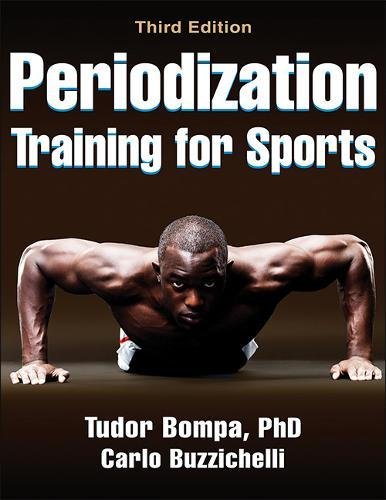
What are training variables? Why manipulate them? How can you manipulate them?
These are some of the questions asked and answered in Chapter 8 of Periodization Training for Sports. In order to achieve specific (and the best) results possible for athletes, many factors must be looked at, programmed, changed, monitored, etc. As a coach or an athlete, it is imperative to design a program that addresses all training variables with a great degree of intentionality. Also, before we begin, it must be understood that all of these variables are related and affect one another to produce a result.
Let’s dive in…
- Training Volume: Training volume is the quantity of work performed (per training session, microcycle, macrocycle, or per year.) It is often expressed as the total amount of weight lifted (tonnage) or the total number of sets X reps. It is important to consider the type of strength required for an athlete, the season the athlete is in, and the training background of the athlete. “Volume should not be increased for its own sake.”
- Training Intensity: This is the percentage of load or 1-repetition max.
- Max Load = 90 – 100% 1-RM (should be used sparingly)
- Heavy Load = 80-90% 1-RM
- Medium Load = 50 – 80% 1-RM
- Low Load = 30 – 50% 1-RM
“Volume and Intensity are very closely related and represent the quantity and quality of work. One is not more important than the other; both should be strategically manipulated in training to produce a desired effect. One of the biggest problems in the strength training world is the sacrifice of quality for quantity.”
- Number of Exercises: This is simply the number of exercises selected per session. There is not one optimal number. Considerations should be taken based on the age and level of the athlete, the needs of the sport, and the phase of training. Generally, the number of exercises should be reduced to focus on prime movers as competition nears.
- Order of Exercises: Complex, multi-joint movements should always be programmed first while the athlete is fresh and can perform at a high level. “It is extremely important that the prime movers be trained in an unfatigued state.”
- Number of Reps and Tempo: Repetitions are how many time an exercise is done during a set. Tempo refers to the speed of execution of each rep. and is linked to set duration. In general, tempo can be broken into concentric speed, isometric duration, and eccentric speed. Table 8.10 gives some general guidelines on how to manipulate tempo for specific adaptations.
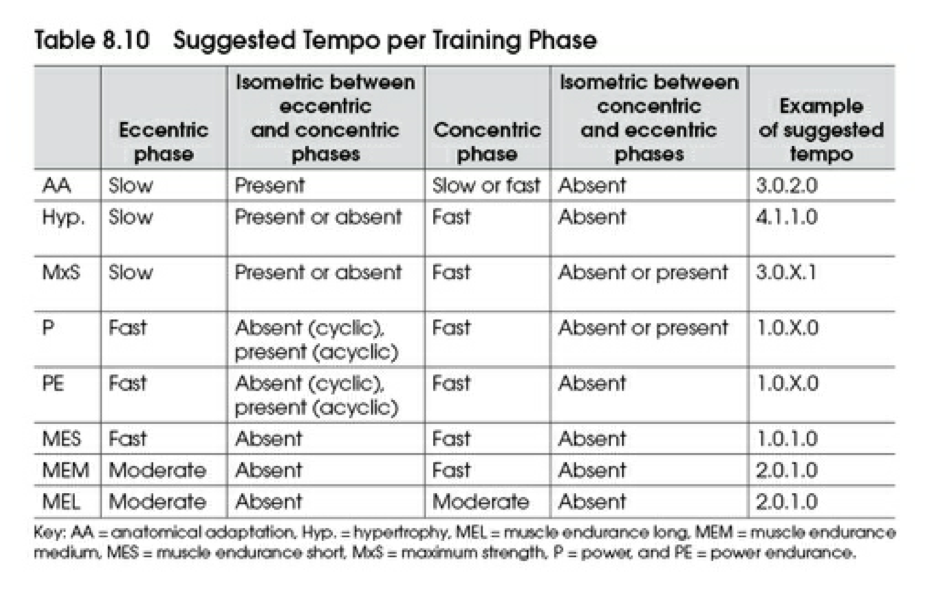
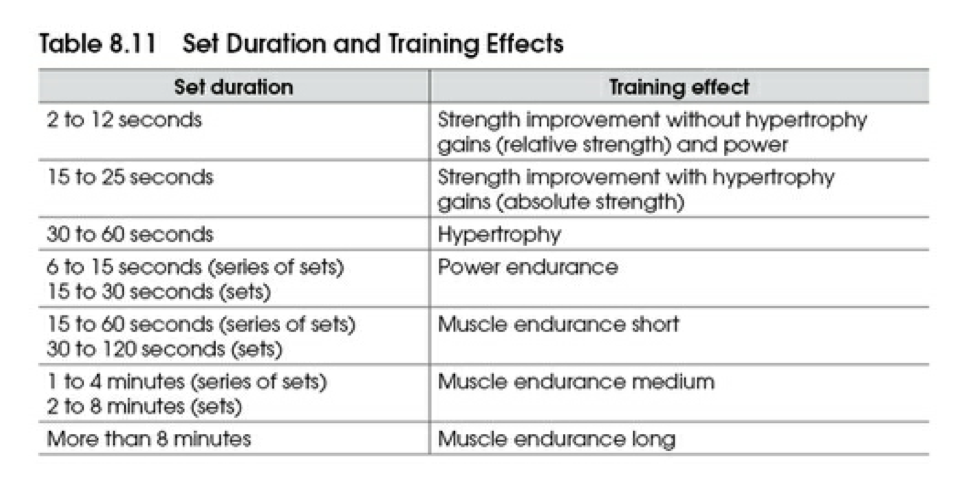
- Number of Sets: “A set is the number of reps per exercise followed by a rest interval.” Typically, the number of sets decreases as reps increase (inversely related). Sets increase as the competitive season approaches. In team sports, sets are low during the season in order to prevent fatigue.
- Rest Intervals: Rest Intervals refer to the amount of time given between sets. Generally, rest between sets increases as Intensity increases. Athletes performing lifts around 85-90% intensity with the goal of absolute strength gain should take 2-4 minutes between sets (closer to 3 or 4). Rest intervals are crucial for proper ATP and CP restoration (energy compounds essential to perform work). “Rest intervals between sets or training sessions is as important as the training itself (see blog on Ch. 4 for more on Rest/Recovery).”
- Frequency: Frequency is how often an athlete trains (every day, every other day, etc.). Frequency depends on several factors such as the condition of the athlete, phase of training, etc. It is important to note that when strength training and technical skill training are performed on the same day, it typically takes 48 hours for muscle glycogen to be restored. If only strength training is being performed, glycogen can reach normal levels in close to 24 hours. High intensity sessions can tax the Central Nervous System and should not be scheduled back to back unless the volume is reduced.
- Loading Patterns: This refers to the pattern of sets x reps at certain intensities over a workout. For example, see these patterns below. What patterns do you use and why do you use them?
Figure 8.5 (pg. 147) is very common but athletes should be wary and avoid concentric fatigue
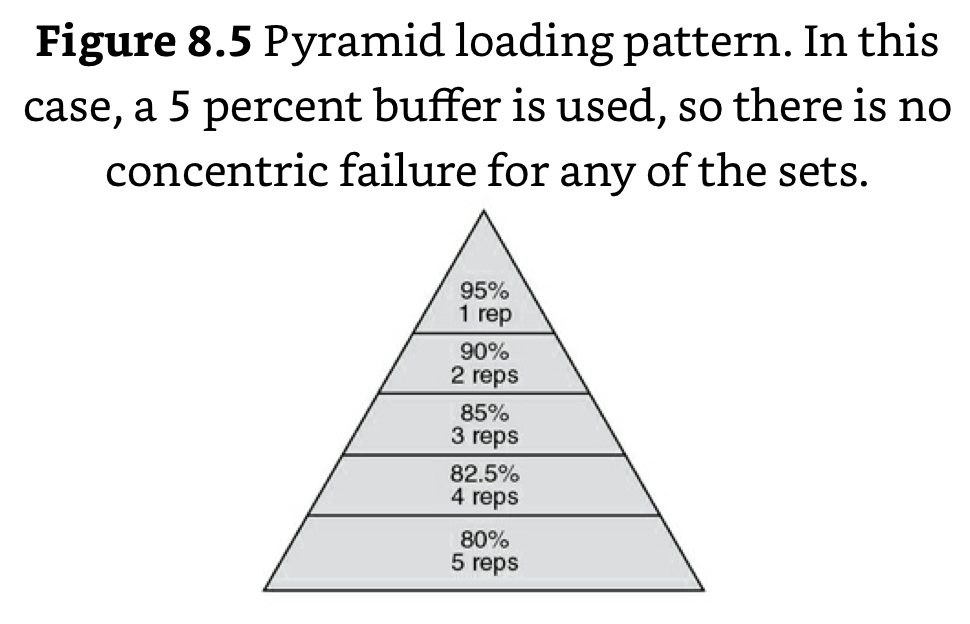
Figure 8.6 (pg. 148) is more suited for hypertrophy than strength
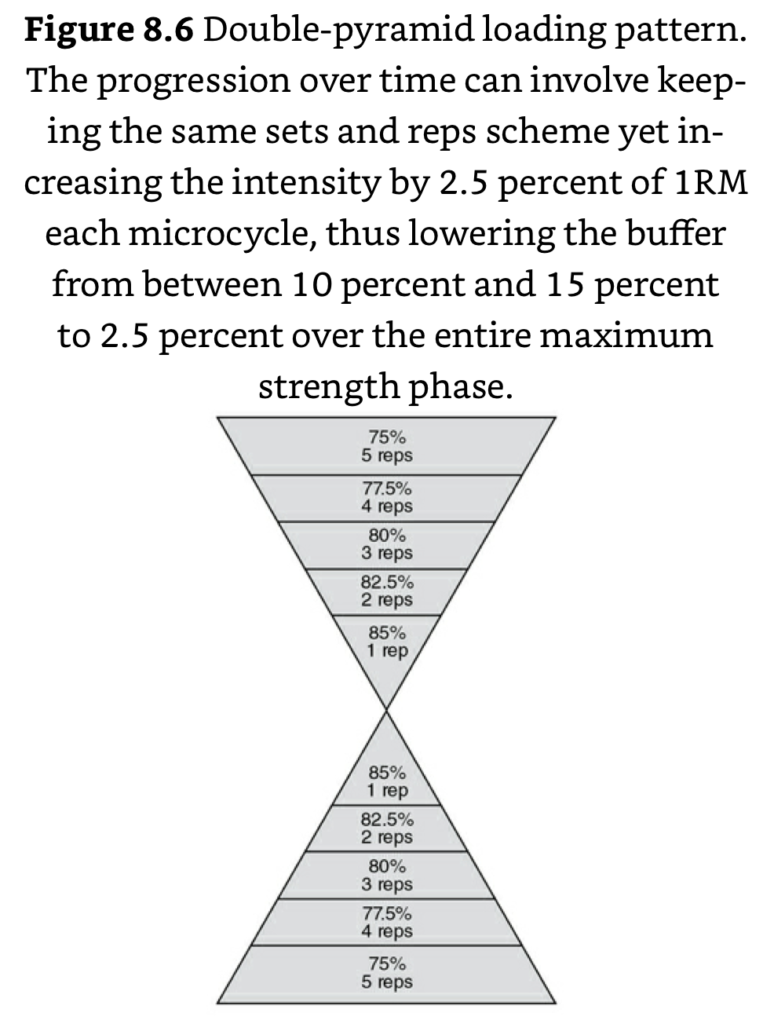
Figures 8.7 (pg. 148) and 8.8 (pg. 149) can produce good strength gains and even offer some specific hypertrophy for fast-twitch fibers.
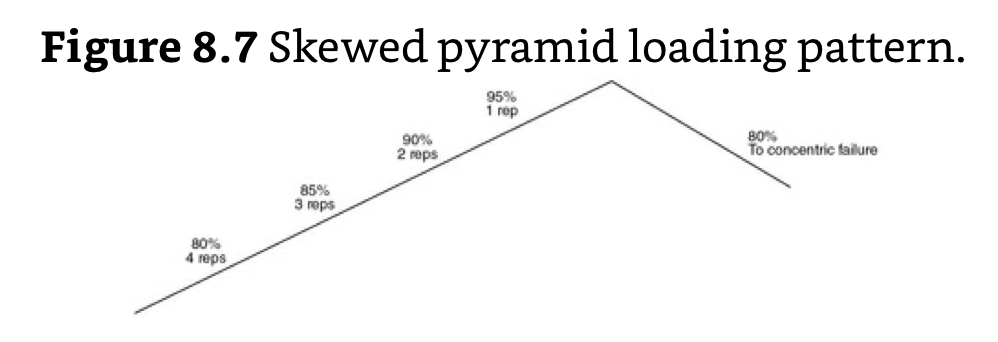

All of these variables must be taken into consideration and manipulated to form a program. The program must be specific, with certain manipulations to elicit the proper response for each stage of training. Questions that should be asked when starting to design a program are what kind of endurance do I need, is speed important, what kind of strength do I need, is hypertrophy necessary, what exercises are important for the sport (train the prime movers), etc. All of these variables can be manipulated based on your answers to these questions. I would encourage you to take a look at programs you have done in the past or are currently doing. Do they address each training variable? Do the variables you manipulated make sense considering the sport you are training? Everything you do in training should be intentional, this approach will lead to greater performance and the hard work on the front end will pay off in the long run.

K. Hunter Byrd, NASM-CPT
Research Assistant | UNC-Chapel Hill
Injury Prevention Research Center
“The views, opinions, and judgments expressed in this message are solely those of the authors and peer reviewers. This content has been reviewed by a team of contributors but not approved by any other outside entity including the Roman Catholic Diocese of Raleigh.”




Spot on with this write-up, I really think this site needs far more attention. I’ll probably be back again to
read more, thanks for the information!